




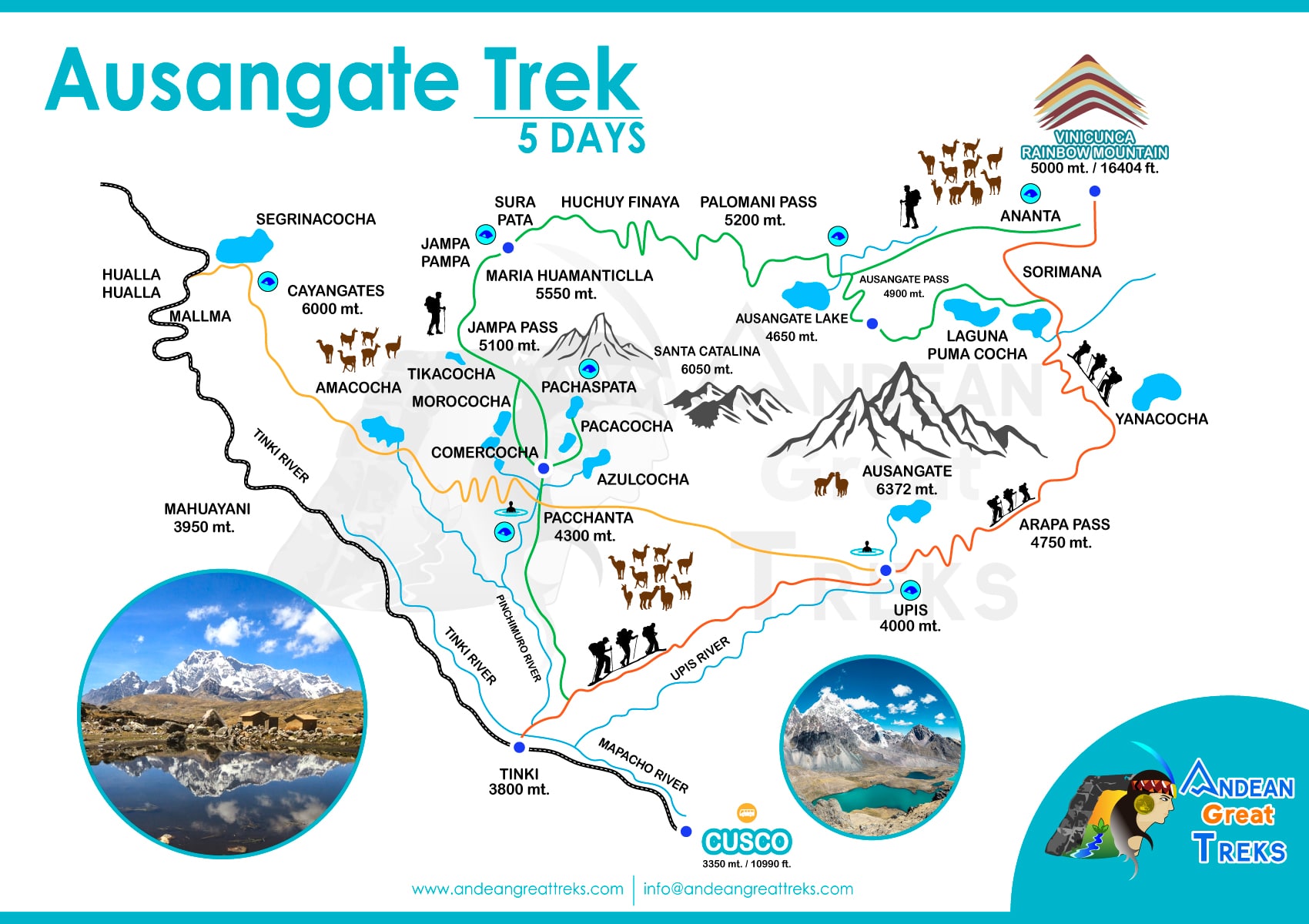 trip overview
included
Trip Highlights
activities
accommodations
itinerary
packing list
faq
essential trip information
best season to travel
price & availability
Reserve Online
trip overview
included
Trip Highlights
activities
accommodations
itinerary
packing list
faq
essential trip information
best season to travel
price & availability
Reserve Online
 CREATING AUTHENTIC TOURS IN PERU
CREATING AUTHENTIC TOURS IN PERU

To the south of Cusco, between the valleys of the Vilcanota and Tinquimayo rivers, in the districts of Ccatcca, Ocongate and Marcapata, insurge, powerful and vital, the Ausangate trek , a gigantic massif of about 100 kilometers long decorated by a multitude of snow-capped mountains that seem to touch the sky with their perpetual snows: one of them, the apu Ausangate, the main mountain, most notable and revered in southern Peru. During the Ausangate Trek circuit you will enjoy its beautiful blue, turquoise lakes.
In that territory of glacial valleys, winding roads, infinite hollows and extreme climates where any human activity seems impossible, the Ausangate Trek inhabitants live and dwell, men and women, who invite them to travel the most extraordinary corners of a nation, of high altitude shepherds. , which still maintain their ancestral customs and traditions. At these heights, men, llamas and alpacas have lived in harmonious communion for more than five thousand years. Another of the occupations of these shepherd towns is textile production, a trade that they carry out with singular skill. It is common to observe women, usually mothers and daughters, delicately spinning while tending livestock under their responsibility.
This trip is rated as Vigorous . Trip members need to be strong, experienced hikers in excellent physical condition. Most days are spent at high altitude (7,000′-17,000’). For the trekking portion, we will remain at elevations between 14,000′-16,986′ and sleeping as high as 15,797′. Most days we hike 5–7.5 miles with average elevation gains of 1500′ and elevation losses of up to 3000′, some of which are quite steep. Upon arrival in Peru, you should be capable of hiking up to 8 miles, averaging 2 miles per hour, without major discomfort over terrain with some steep grades for multiple days in succession. To help combat the effects of altitude, incorporate hills and stairs into your training.
High Mountain Camping Tents:
On our Ausangate trekking adventures, we use the best outdoor trekking gear. Our camping tents have the best technology to withstand the harshest climates in the Andes. They are Tents that have a capacity for three people, but are only used by 2 people. For your comfort, an inflatable mattress and additional blankets are provided to insulate you from the cold. Because it is always different to experience the true spirit of Trekking, our company maintains that idea of not using Lodges or huts as other companies do.
This hike begins with a pick up from your hotel in Cusco at 5 am. On the way we pass through Urcos, continue to Cattca, farming and cattle raising community where we can appreciate the spectacular views of the region, Ocongate, enjoying impressive views of the Ausangate snow-capped mountain, after 3 hours you will arrive at the Mallma Community, where our expert cook will prepare a delicious Andean breakfast.
Once we have recharged our energies with a good breakfast, we begin the hike, crossing potato fields, and you will also be able to enjoy a beautiful view of the Ccallangate snow-capped mountains. Little by little the communities disappear, giving way to the natural life of the mountain range. In the afternoon we descend to the beautiful Singrenacocha lagoon where you will enjoy a beautiful view of the sunset. There our tents await us, alone in the midst of peace and a lot of spiritual experience. We will spend the night at the foot of the Alccamarinayoc mountain.
Accommodation
Meals Included
Special Information
This trip visits places that are at high altitude, and as a result some people can suffer from altitude sickness, regardless of age or physical health.
After a good night’s rest, we begin the day with a slight climb up the Quillhuahuayjo mountain range in the company of llamas and alpacas that graze peacefully on the slopes around us. This day is longer than the previous one, since we have three passes to cross at the top of the Andes Mountain range. After 3 hours we cross the first pass at 4730 m. The mountain welcomes us with beautiful views of the snowy peaks. Then we pass the second pass, with a similar height to the previous one, from here we can see Armacocha lagoon, where we will stop for lunch.
Then we continue along the Quilmascocha ravine, arriving at the town of Pallca, where the local inhabitants are dedicated to raising llamas and alpacas. In the afternoon we ascend to the Yana Orqo pass, from here the panorama is captivating and epic with incredible landscapes of the Andes. You can see the snow-capped peaks of Callangate, Puca Punta, Ausangate. Around 4 pm we will arrive at the campsite in the village of Pacchanta, where you can enjoy the hot springs.
Accommodation
Meals Included
After a hot coca tea and a good breakfast, we walk towards the Vilcanota mountain range. The morning is filled with colors thanks to the glacial lagoons: Azulcocha, Uturungucocha, Ccomercocha among others. At the foot of the snowy Jatun Punta, we stop to enjoy the last view of the Pacchanta Valley. Then we begin to climb to the highest point of the hike, the Jampa Pass 5,200 m for 3 hours. The path is not so steep but a good physical level is required, since in the Andes at these heights’ oxygen is scarce. There, together with our guides, we will make an offering to Pachamama with coca leaves and liquor. It is also customary to build a tower of stones that the locals call Apachetas, these symbolize respect for the mountains as well as good energy and harmony in our trip. On this day, if we are lucky, we can see some vicuñas and wild deer, and if we are very lucky, a condor. Then we gradually descend to the Ticllacocha lagoon 4780 m where we will have lunch. In the afternoon we will arrive at our campsite at Huchuy Phinaya.
Accommodation
Meals Included
Today, you will wake up at the foot of the highest mountain in the Cusco region, Ausangate (6,385m/20,940ft) and after breakfast you will start walking along a flat path for 30 minutes until you reach the small and charming red lagoon (Pucaqocha), which is located right at the base camp to ascend the Ausangate glacier. Pucaqocha is one of the most captivating lagoons and very little visited by tourists.
After admiring the extraordinary scenic beauty of the red lagoon, you will begin to ascend to the Palomani Pass (5,200m/17,060ft). From the top you will be able to enjoy splendid panoramic views, especially of the imposing Ausangate mountain. After admiring the beauty of nature, we will begin the descent to Ausangate Qocha. Then we will continue the gentle walk to Ananta where you will enjoy a delicious lunch.
Afterwards we will have a gentle 2-hour climb to Warmisaya (5,100m/16,732 ft), we will continue the route downhill for one hour to the Surinacocha lagoon, where our camp will be ready and waiting for your arrival. After a delicious dinner, a peaceful night’s rest awaits us.
Accommodation
Meals Included
Today is a much-awaited day because you will visit the most famous and colorful place of this 5-day Ausangate Trek. To visit Rainbow Mountain before the crowds arrive, we will have breakfast at 5:30 and at 6:00 am we will begin to ascend to the Vinicunca viewpoint (5,100 m/16,732 ft). From the top, you will be able to fully enjoy the panoramic view and take excellent photographs and videos.
After appreciating the amazing colorful mountain, you will visit the Red Valley viewpoint, the scenery is out of the ordinary, it seems like you are walking on the surface of the planet Mars. After exploring these beautiful landscapes of the Peruvian Andes, we descend to the point where our return transportation to Cusco awaits us. You will arrive at your hotel at approximately 2:00 pm.
Meals Included
When packing for your Ausangate Trek, you should keep in mind that it is best to dress in layers due to the weather variation. The variety of clothes that you must pack to dress in layers is key to your walk, from the morning when it is quite cold until mid afternoon when the temperatures rise and reach their peak and then freeze again at night.
Stratification is also useful as you ascend high passages that are exposed to winds or descend into shady valleys.
Effective stratification only works if each layer allows moisture to pass and escape into the external environment. In fact, the best layered clothing, such as wool, promotes moisture transfer through its absorbent properties. Cotton and denim absorb moisture and, therefore, should be avoided.
 warm jackets
warm jackets
 Hydration bladder
Hydration bladder
 wool socks
wool socks
 camera
camera
 scarf
scarf
 first aid kit
first aid kit
 hiking shoes
hiking shoes
 Dry bags
Dry bags
 Trekking Poles
Trekking Poles
 sun cream
sun cream
 Snack
Snack
 sun hat
sun hat
 bathing suite
bathing suite
 rain coat
rain coat
 Sandals
Sandals
 insect repellent
insect repellent
 Passport
Passport
 Down Jackets
Down Jackets
 toilet paper
toilet paper
 daypack
daypack
 Wool cap
Wool cap
 head lamp
head lamp
 gloves
gloves
 sun glasses
sun glasses
 cap
cap
 extra cash
extra cash
 Trekking pants
Trekking pants
The AUSANGATE TREK is an adventurous route offering stunning Andean vistas, hot springs, turquoise lakes, mystical glaciers, green mossy passes and enormous snowy mountains. Along the way, you’ll catch a glimpse of interesting wildlife, like condors, chinchillas , herds of llamas, alpacasand, and wild vicuña. You’ll also come across hidden picturesque Andean villages and traditionally dressed Quechua people, richly embedded in centuries-old traditions. The highest point of the trek is 16,800 feet above sea level and the highest campsite elevation is at 15,255 feet.
A voyage to Ausangate mountain is one of natural beauty, living history and ancient spirituality. Considered challenging, this trek is recommended for seasoned hikers only, who have experience hiking at high elevations. Ausangate is actually the 5th tallest mountain in Peru, standing at 20,945 feet above sea level
In this part Andean Great Treks has tried to answer the most frequent questions that our travelers have asked us about the Ausangate trek, if you do not find any question, let us know through our mail so that we can help you with pleasure.
The Ausangate Mountain is a natural attraction that is located in the district of Ocongate, within the province of Quispicanchi, in the department of Cusco. That snow-capped mountain is part of the Cordillera de Vilcanota and, according to an ancient legend, it was the brother of the Salkantay snow-capped mountain.
The Ausangate Mountain, has a height of 6,384 meters above sea level; and is considered an apu, or protective deity of the peoples that surround it; as well as the most representative mountain in the region. Its size is such that it can be appreciated even if one is in the Sacsayhuamán Fortress, not in vain is it considered the fifth highest mountain found in Peru.
This beautiful snow-capped Cusco impresses the eye, due to its incredible natural formations; In it, there are not only beautiful water mirrors such as the Sivinicocha, with turquoise waters, but also stone forests, glaciers and high plains that seem to make this natural attraction a paradise on earth, especially for those tourists who are interested. for adventure sports since the geographical features of Ausangate make it ideal for practicing sports such as rock climbing, ice climbing, trekking, among other activities.
The Ausangate Mountain appears before our eyes as a mountain challenge; It is known that the first attempts to ascend it occurred in the early fifties of the last century, there were two frustrated first attempts to conquer the top of the mighty Apu, it was not until 1953, when a German expedition achieved the goal, climbing the mountain on its southern slope, in posterity, new routes were opened for the conquest of the Apu, however, only in 1983, thirty years after the first ascent, Peruvian feet crowned the top of the majestic snow-capped mountain.
At present, different companies have been promoting the Ausangate route as a trekking route, one of its purposes is that the expeditionists manage to surround the snow-capped mountain, although to date, few seasoned visitors have dared to follow it. Those who are interested in climbing this snowy mountain must know that they must have had enough time to practice before, since the Apu is not a snowy peak for beginners; so if you are an intermediate level mountaineer, it is recommended that you go in the company of a larger group of people experienced in the field.
In order to reach this beautiful mountain, it is necessary, if one is in the city of Cusco, to go to Urcos, this first trip can be done by bus, and the duration of the journey to the place is one hour. Once in Urcos, continue to Ocongate and from here to Tinke, also by bus, spending three more hours on the way. Already in Tinke you have to pay for the right of entry, this has an approximate cost of ten soles, quite apart from the services of tour guides that are hired.
The Inca tradition tells that Salkantay and Ausangate were two brothers who lived in Cusco. After a terrible time of drought, both ventured into strange lands to save the town from the crisis. Salkantay went north and found the jungle, and there, Veronica’s forbidden love; instead, Ausangate went south, to the highlands, and there he found a large amount of Andean food, such as camelid meat, corn, and potatoes, which he sent to the population.
The Chillca community, made up mostly of llama and alpaca farmers and herders, is known as the guardian of these beautiful landscapes. Every year on the slopes of the mountain the Qoyllur Ritti festival -“star snow” in Quechua- is celebrated before the Corpus Christi festival, during which thousands of people make a pilgrimage to the Sinakara temple where the painting of the Crucified Christ engraved on a rock. This pilgrimage has been named Intangible Cultural Heritage of Humanity in 2004.
The Apu Ausangate is the fifth highest mountain in Peru at 6,384m, and is the highest of the 6 peaks that exceed 6,000m located in the Cordillera del Vilcanota in the Cusco region. The first ascent was made in 1953 and was led by the famous Austrian climber Heinrich Harrer, part of his first group conquered the north face of the Eiger, which was the story and script for the book/film “Seven Years in Tibet” (The renowned actor Brad Pitt was the protagonist of this film).
Ausangate is the most famous and well-known snow-capped peak in Cusco, the normal route to reach its summit is not very technical and difficult, but a lot of resistance and strength are needed to break the path with loose or accumulated snow to the summit stalls. Ausangate is the main Apu in Cusco and can be seen from many places in the city. It is rarely visited by tourists in this part of the region but is becoming popular as a destination to do the Circuit Trek around the snow capped in the dry season.
The altitude is insane. I’ll mention again that this trek never drops below 14,000 feet! Many of the passes are grueling and tower over 16,000 feet. The mountains are Apus, or Gods, to the Indigenous, so go in with the mindset of respecting them in this regard. By the way, the mighty mountain of Ausangate is a staggering 20,945 feet (6,384 m).
Ausangate is surrounded by extensive and luminous turquoise lakes such as Sibinacocha, as well as stone forests, glaciers and vast plains that impress with their magical landscape. Reaching the top of Ausangate involves a journey of 5 days and 4 nights along 70 km, which is why it is considered one of the most challenging trekking routes in the Andes. However, during the walk, the traveler witnesses incredible postcards: multicolored mountains, herds of alpacas and desert cliffs that together create an incredibly beautiful outdoor experience from start to finish.
The landscape is stunning. The imposing chain of mountains of the Cordillera de Vilcanota with its snow-covered peaks takes the breath away from those who dare to explore it.
There are more than 400 glaciers that extend between the Cusco and Puno regions. One of them is Ausangate, the guardian mountain of Cusco that gave its name to the regional conservation area created in December 2019, over an area of 66,514 hectares distributed between the provinces of Quispicanchi and Canchis, in the department of Cusco
Ausangate is not like some other high-altitude treks e.g. Everest Base Camp trek or Annapurna Circuit that start at lower elevations and gradually gain altitude. The entire route of the Ausangate trek goes over 4000m. Good acclimatization is the key here.
Altitude sickness, or Acute Mountain Sickness (AMS), is a health effect that can arise at high elevations. Minor symptoms include headache, fatigue, difficulty sleeping and dizziness. More progressed cases can result in vomiting, shortness of breath and high altitude cerebral edema, which is associated with lethargy, nausea and disorientation.
Altitude sickness occurs in 20 percent of people at 8,000 feet and 40 percent of people at 10,000 feet. For a hike like the Ausangate trek, it is highly likely that you will experience some form of altitude sickness, as elevations reach as high as 16,800 ft. For this reason, it is important to acclimate properly, take your time on the trail and take measures to combat symptoms.
The possibility of experiencing altitude sickness is one of the most common concerns for visitors to Rainbow Mountain. Altitude sickness is caused by a lack of oxygen at higher altitudes and can set in at altitudes above 2,500 meters (8,000 feet) above sea level, putting Rainbow Mountain’s altitude of 5,200 meters (17,060 feet) well above the minimum elevation where it can occur.
Many people arriving in Cusco by bus from Lima or the Amazon get altitude sickness. It is normal if you fly or go by bus from a low altitude to a location more than 3000m above it. Our body needs time to adjust to the decreasing amount of oxygen available due to the altitude, the higher you go the lower the air pressure and the less oxygen available to you.
Symptoms
There are three types of altitude sickness; Mild Altitude Sickness, HAPE and HACE – the last two are lethal. The Mild Sickness is the first stage that if you don’t take precautions, it can develop into one of the lethal types. Having Mild Altitude Sickness is similar to having a hangover; headache, nausea, fatigue. Many people feel it for the first couple of days in Cusco.
How to prevent
As a foreground, the point from where this excursion will start is Cusco, which is located at an altitude of 3500 masl.
It is there where you will have to acclimatize before starting the Ausangate Trek, together with your friends and all the crew that will accompany you.
The first day you will start a trek from the towns of Pacchanta (3980 masl) towards the mythical mountains of Ausangate, so base camps are usually located at an average height of 4120 to 4350 masl.
On a normal day in the Ausangate Trek circuit you gain height from 800 to 1000 meters per day. The highest steps exceed 5,000 masl. With all this data, it is considered that the Ausangate route is to be well prepared and adapted to the climates and challenges of the Andes.
Like most trek in the region, the best time to do the Ausangate trek is in the dry months between May and September. Unlike other popular treks, the Ausangate trek is very quiet, even in peak season.
In the shoulder months of April and October weather is still pleasant and the trek is very possible. However, because of its altitude you’ll have to contend with freezing nights, even in the dry season. Because of the altitude and snow, the trek is best avoided in the wetter colder season between November and February.
Temperatures during the day in the dry months are usually quite mild and visibility is very high. Because of the height you’ll want to make sure you are wearing layers, especially for the colder nights.
Because of its high altitude and frigid air, rainy season in the region often translates to snowfall for Rainbow Mountain. Visitors to Ausangate Trek and Rainbow Mountain should come prepared with clothes for all weather, as conditions can also change quickly. For more information about when to visit, make sure to check out our blog on the best time to visit Peru.
The weather at Ausangate Trek and Rainbow Mountain is very unpredictable, changing frequently and quickly. You might see warm weather and sunny skies one minute and then cloudy skies and snowfall the next. The best idea is to make sure you’re prepared for all weather by dressing in layers.
In the Vilcanota Range, there is a dry season and a wet season. The dry season is between May and September, and is considered the best time to hike in the Andes. Keep in mind, however, that the dry season, containing Peru’s winter months, is also the colder time of year. The coldest months are May through July. Expect the days to be cool, no warmer than 40 degrees F, and the nights to drop to freezing temperatures as low as 10 degrees F.
The rainy season is between October and April. While the rainy season is warmer, it can still be cool at night. In fact, there can be heavy snow as well given the elevation. The rain and snow can cause muddy conditions on the trail and even partial closures. It is especially inclimate between January-March, with February bringing the most precipitation. The shoulder months of October and April bring more moderate weather with mixed rainy and dry days.
Dry Season – June to August
Should Season – April to May & September to October
Rainy Season – November to March
Nighttime: 39℉ (4℃)
The Ausangate Trek traces through high elevation landscapes ranging between 10,334 ft to as high as 16,800 ft above sea level. The land surrounding the mountain features Andean uplift, glacial valleys with hanging glaciers, Permian formations and cretaceous limestone forests. The trail takes hikers through landscapes bursting with glaciers, snow capped mountains, thermal lakes, high flatlands and lush green valleys.
Peru is famous for being home to many exhilarating treks. Though not as popular as some of the other trails accessible from Cusco, the Ausangate trek is just as worthwhile. In fact, being less crowded with tourists is part of its charm. It guarantees travelers who venture on this remote journey a more unique experience. While you won’t come across Incan ruins, it makes up for it with breathtaking natural scenery and spiritual significance. Spot spectacular snow-capped peaks, gorgeous lakes, and wonderful wildlife, including herds of llamas and alpacas. The centerpiece of the trek is the mighty Apu Ausangate, one of the tallest mountains in Peru.
The Ausangate Trek is a high altitude 70km hike in the Peruvian mountains near Cusco with an average altitude of over 4000m. Unlike most other hikes in the region Ausangate is not about Inca ruins, it’s all about beautiful scenery; snow peaks, glaciers, colorful mountain lakes, and the Rainbow mountain. If you like beautiful nature, going off the beaten track and hiking this trek is for you.
Ausangate is one of the most challenging hikes around Cusco but at the same time one of the most rewarding in sense of scenery. If you have any doubts about hiking Ausangate on your own read this article we hope it’ll help you decide whether to do an independent or guided trek. For more info on all our favorite hikes in Peru.
Basic Information
There are circuits from 3 to 7 days, which have different starting and ending points. It is advisable to do each circuit with a certified and highly experienced tour operator. The Ausangate Trek is a challenging high altitude trek through 70 km of the Cordillera Vilcanota mountain range and features some of Peru’s most extraordinary scenery. Ausangate is an off-the-beaten track hiking alternative with minimal foot traffic that allows you to carve into the mystical side of an ancient Andean world.
A voyage to Ausangate mountain is one of natural beauty, living history and ancient spirituality. Considered challenging, this trek is recommended for seasoned hikers only, who have experience hiking at high elevations. The route takes you through the Cordillera Vilcanota, or the Vilcanota Mountain Range. Ausangate is actually the 5th tallest mountain in Peru, standing at 20,945 feet above sea level.
Through the Ausangate trek, you’ll ascend and descend through the mountain range, finding sweeping Andean vistas, thermal lakes, mystical glaciers, green mossy passes and enormous snowy mountains. Along the way, you’ll catch a glimpse of interesting wildlife, like condors, chinchillas and groups of vicunas. You’ll also come across hidden Andean villages richly embedded in centuries-old traditions. The highest point of the trek is 16,800 feet above sea level and the highest campsite elevation is at 15,255 feet.
The Ausangate trek is considered strenuous, with a few moderate days sprinkled in. The trek is classified as Grade C in difficulty, which implies altitudes between 14,800 to 16,400 ft (4500-5000 m) and 6-7 hours of hiking per day. Many of the days have steep sections that cause rapid altitude gain in a short time. Anyone with a good level of fitness can manage this hike, but it is recommended that trekkers have experience with multi-day hikes at high elevations.
Another factor to consider, aside from the steep sections and 16,000 ft+ elevation passes, is the weather. The weather can be quite unpredictable, and blizzard conditions at the higher altitudes are not uncommon. It is important to factor the low temperatures and your tolerance to cold and snow when determining your suitability for this trail.
We have different distances from the ausangate trek, the shortest is 15 km = 9.3 miles. And the longest 6-day trek has more than 70 km = 43 miles.
The classic 4-day Ausangate Trek tour is 36 km approx. = 22.3 miles
Andean Great Treks is proud to have the best staff of chefs specialized in high mountains, with more than 15 years of experience, in the different trekking routes in Cusco. On our Ausangate route we provide you with the best food service every day, our chefs will prepare meals with 100% fresh and organic foods, since our company is focused on community work and support for farmers who provide us with their best fruits. You can taste the best Peruvian and Cusquenian cuisine, during the breakfast we will have pancakes, omelettes, coffee, milk,butter, cereals, and very nutritious breakfast of Cusco based on oatmeal, quinoa, wheat, etc.
Lunches and dinners are served buffet style, such as sauteed loin, quinoa chaufa, salads, vegetable soups and products from the Andes, chicken, steak, alpaca.
If you are allergic to any type of food or do not consume gluten, or are vegetarian, it is no difficulty for us as we are trained to provide food under these food standards.
In general, Andean Great Treks handles an order and quality in the handling of the products, taking care of their safety so that no illness or discomfort happens during the days of hiking on the Ausangate mountain.
Andean Great Treks has professional, knowledgeable, dependable and experienced guides, who all are well trained for us every year. All of our guides have spent years exploring the mountains and studied in Universities and Institutes of Cusco. All guides speak fluent English and have a great knowledge of the various trekking routes. Our Guides will have the pleasure of guiding you in the most beautiful trails in the Ausangate Trek, Inca Trail, Lares Trek, which will enhance your holiday experience and make it a real success. Our guides are trained in first aid and know how to do in any emergency situation. And most importantly our guides are very friendly and enjoyable and want to share with you the faith of Peru.
Because it is one of the most demanding trekking routes in terms of physical and mental levels, we recommend doing this activity only for young people between 15 and 55 years of age.
Since they are the ones who can manage with great skill in these difficult routes of the Andes of Peru.
Although there were people up to 60 years old who were able to complete this fabulous route of the Ausangate Trek. Always before embarking on a trekking adventure anywhere in the world, we advise you to consult your doctor.
We recommend purchasing travel insurance if you plan to trek in Peru. Most of the trekking spots in Peru are very remote so if something goes wrong you will likely need an emergency evacuation and that can be incredibly expensive.
When choosing travel insurance, be sure to purchase a plan that covers high-altitude treks and helicopter rescue, just in case.
The briefing is very important because it is when you will meet your guide. During this meeting, your guide will provide you with important details regarding the Ausangate trek. If you are participating in any of our treks, you will be given a duffle bag for your luggage. You will not be given a duffle bag for the Ausangate Trek. At the briefing, you will also pay your remaining trek balance. You will be given a map to our offices with your booking information.
Yes. You can leave your luggage at our offices.
You can bring it with you to your briefing, or you can bring it when you are picked up in the morning to leave for your trek. The driver will bring it back to our offices. You can also arrange to have it dropped off at your hotel once you return from the Ausangate trek.
Tipping is not mandatory on a guided Ausangate Trek, but it is highly recommended. You will be amazed by the amount of work and dedication that the guides, chefs, porters and other crew bring to your experience. Tipping is a great way to show your appreciation for the incredible experience. A good rule of thumb is 30-50 soles ($8-$15) per hiker per day. All the hikers on the team can pool their tips and then hand to the trekking team, who will distribute among themselves.
On the Ausangate Trek it is possible to find shops to be able to supply water on the first day. You will then be provided with water that is boiled and then filtered, to avoid any kind of illness or discomfort. It is not a good idea to drink water from waterfalls, lagoons or streams, as many of them could contain toxic minerals or bacteria that are harmful to human health.
Yes. This is very important!!! We recommend that you bring 300 to 400 Peruvian soles. It is possible that you may not need any of this money, but just in case of an emergency you should make sure to have plenty of cash. If you are struggling on the route, you can use the money to purchase alternative forms of transportation such as: car, horse.
Groups are usually 2 to 8 people. This also depends on the time of year. The maximum is 12 people and the minimum is 2 people.
We will provide you with a duffel bag for all of the treks. You can carry about 7 kilograms in the duffle bag. These duffle bags will be carried by horses throughout the trek. You only need to carry a small backpack/day pack with the items you might need throughout the day like sunscreen, bug spray, jackets, or snacks.
As you can understand, this is a trek that is very far from civilization, therefore there is no way to use the internet, about charging devices anyway, you can only use your solar panels. Or carry extra batteries in case of cameras.
If you choose to go on a private tour, the tour will be tailored to you. The size of the group depends on you and only you. You can decide exactly who will be on the trek with you. This is perfect for couples, families, or groups of friends. You will have your own personal chef and guide, which means the trek is more personalized and able to satisfy your personal needs.
Andean Great Treks organizes the Ausangate treks with a responsible and serious team of muleteers. Those who are in charge of their times and walk controls on the Ausangate Trek route. If you have a deficit in the pace of the walk, you will be given an assistance horse, which you can use, until you recover and you can continue the trek normally. Attention that our programs do not include horse rides during the whole journey, if in case you wish to do the tour on a horse you must communicate it at the time of your orientation in Cusco, and the guide will tell you how much it will cost and how is the service. For reasons of animal protection our company has some restrictions on the weight that you must carry or of the same person, Andean Great Treks does not allow animal abuse under any circumstances. Remember that we do the Ausangate trek to walk and enjoy the beautiful landscapes of the mountains and lakes, which will surely be a unique experience in your life.
If you could not complete your Ausangate Trek program, because of health problems or any other circunstances, in the first instance you will be evaluated your vital signs, then you will be evacuated as soon as possible to a nearby place with highway, and once there you will be transported in local mobility to Cusco. Since there are no well-equipped hospitals in the Ausangate Mountains, these expenses will be covered by you. So it is suggested to have travel insurance that covers such incidents. In adition our company will not refund the tour cost already payed.
Our trekking tents are from reputable brands, such as Doite, Noth Face, Salewa, Eureka. Which is designed to withstand extreme weather conditions. Each has a capacity for 4 people, but that is used only by two hikers, and thus have more space for their things. You will also be provided with a blanket and a foam floor mat.
To take food we have kitchen and dining tents, which have enough space, where you will have your table and chairs well accommodated.
Our company takes portable toilets to the Ausangate Trek route, since in those landscapes there are still no large towns and they maintain the entire pristine circuit. Do not forget to bring your hygienic pale roll, and leave the waste generated in the container according to the classification according to its colors. Avoid throwing them during the walks, as you also there are many hikers who would like to find these circuits free of garbage.
At the end of the tour our guides and chefs are responsible for returning all the waste generated to the city of Cusco.
There are no showers on the Ausangate Trek route, it is generally not advisable to take baths above that height, as you could fall ill with the flu or pneumonia. Andean Great Treks will provide you in the morning at waking time and in the afternoons after completing the trekking activities a bucket of hot water, with which you can clean your face and feet.
Good news is that on the Ausangate route at the beginning and end of the trekking circuit you can enjoy the thermal-medicinal baths, on the first day there are the Upis thermal baths, and on the last day the Pacchanta thermal bath, at the foot from the Ausangate mountain.
For this reason, do not forget to bring your bathing clothes, and the payment that is made is for the community that manages it (entry cost $ 4 usd).
On all Ausangate Trek routes, you will cross many indigenous communities, who will receive you very happy for your visit, and will also offer you their handicrafts that they produce, if you want to support these people, do it, since the little, that they produce in their crop fields, it is not enough to lead a comfortable quality of life. Our friends of the high Andean communities are also very kind, do not worry when conducting an interview or a photograph, since your guide will be the one who can translate it so you can establish a conversation and thus learn more about their experiences and customs. It should be understood that these communities on the Ausangate Trek route are considered one of the last that still practice the traditions inherited from the Incas. They still perform ceremonies of offerings to the Pachamana or Mother Earth, coca leaf ceremony and the most important festivals according to the Quechua calendar.
Andean Great Treks is a serious and formal tour operator travel agency. As such, in all our Trekking and Ausangate Trek activities we normally carry the oxygen tank, which can be used if one of our clients requires it. Remember, it is a medium oxygen tank, which is used as an emergency mediation to stabilize the tourist, if it still requires more oxygen, you will be evacuated to a closer control point where a vehicle passes, and will also descend to a lower height, to avoid altitude sickness or a tachycardia.
A first aid kit is also carried, which serves to help tourists in emergency circumstances. But have this information: No person who does not have the certification of a doctor, pharmacist or nurse can prescribe any medication, since we do not know the true medical history of the patient, which instead of improvement can worsen their situation. That is why we suggest as an important measure, if possible, bring your own first aid kit with the pills that a doctor has prescribed before starting the Ausangate Trek.
The answer is that if, since having trekking poles on the Ausangate Trek route is vital, this instrument will help you overcome very difficult barriers, and have it in good balance during well-sloped descents. The type of cane that is recommended is of free will for you, since these define according to the food you are going to provide, it can be aluminum, carbon fiber, or other material, but if it has a good resistance When hiking, another no less important detail is that you must have the metal protectors at their tips, usually you will be accommodated with rubber soles. Preferably those that can be easily packed and tied.
If you can rent a sleeping bag in our office in Cusco. For the Ausangate Trek it is necessary to have a sleeping bag that has the resistance specification at -15 C ° to -20 C °. Because otherwise you will feel very uncomfortable with the icy weather of the Ausangate Mountains.
The department of Cusco, one could say without fear of falling into unnecessary mistakes, has it all. It is, shall we say, a small country within another. Its varied climates, product of the profusion of ecological floors, its impressive relief and its proximity to the tropical zone of the planet determine the existence among its folds of a unique, incomparable biological diversity. We must not forget, furthermore, that Peru is considered one of the seven megadiverse countries on the planet due to the varied ecosystems created by the Andes mountain range when it rises above the continent and to the action of the marine currents that bathe its extensive coastline.
Geography treatises indicate that in the deep ravines and intermediate zones, forests formed by numerous tree, coniferous and broadleaf species are typical. In the lower areas, on the other hand, ferns, reedbeds, alders and ornamental plants with seasonal flowers are common. In the Quechua and Puna zone, ichu, queuña, waqo, achupalla de monte, raqui-raqui, moqo-moqo, jucucha, huejontoy, tabaquillo, paico and tintin predominate. Full life and nature on the roof of the world.
The situation of the native forests of Peru is doubly serious, by cutting them down or burning them, one of the activities that most damages Andean ecosystems, not only is the provision of valuable environmental services lost, but the flora and fauna that allowed the insurgency of life in the territory we occupy.
The Andean forests are varied, within each of them different tree species thrive. On the Ausangate Route, where queuñas, chachacomos, unkas, tayankas, wancartipas, wamaq’eros, chuyllures, jalastos, siracas, t’astas, capulí-pishay endure, natural life makes the difference.
The following are the most notable trees on the Ausangate Trek:
The Queuña (Polylepis spp):
It is an extremely resistant tree to the altitude and to the cold typical of the Andean high-plains. It has been proven that it can live beyond 4,500 meters above sea level. The Queñuales, especially those found in the Vilcanota mountain range, contain a very varied fauna and flora that is characterized by its high level of endemism. The forests of this species regulate the climate, prevent soil erosion and store large amounts of water that ultimately feed the course of springs and puquios.
The Pisonay (Erythrina edulis):
Pajuro, bean or red cedar is a tree common to the temperate zones of Peru, where it can be found adorning the main squares of some of its cities with its size. Its leafy foliage, its red flowers and its incomparable size distinguish it from other native trees, which are generally small and rugged. It is known that it was cultivated and used by the Incas. Its fruits, which are tasty, serve as food and its leaves, flowers, bark and roots are used to cure various ills and as a contraceptive in rural areas.
The Chachacomo (Escallonia resinosa):
It is a tree with a bright reddish trunk that was used by the Incas to dye beige cotton and wool fabrics. Its leaves were used to prepare infusions useful as a brain tonic. Its wood is an excellent fuel and chaquitacllas are made from its branches, the best-known plow of the ancient Peruvians; Possibly, the keros, the ceremonial vessels that dazzled the conquerors, were also made from the wood of this tree.
The Alder (Alnus jorullensis):
Huayau or Lambrán is a good-sized tree that can reach 10 to 15 meters in height and is distributed between 2,500 and 3,300 meters above sea level throughout the Peruvian highlands. It grows in the ravines and on the edges of the farms: it is a tree that, due to its open crown that allows solar radiation to filter, does not disturb the growth of agricultural plants.
The Ccolle (Buddleja coriacea):
Qolle, Quishuar or Puna Quishuar is a tall, straight tree with a dark green, globose crown. In the times of the Incas, its wood was used for the construction of houses and the manufacture of instruments and its leaves as an effective remedy against rheumatism. Currently, the peasants use it as a living fence or “retaining wall”. Its foliage provides good fertilizer to the farms. Apart from the uses mentioned, the Ccolle provides excellent quality wood for the manufacture of beams, doors, windows, lintels and for the elaboration of agricultural tools (yokes, plows, tacllas) as well as for handicrafts and props. It is resistant to rot and fungi even when it remains in the water, hence its usefulness for making gates and parts of irrigation canals.
The Sauco (Sambucus peruviana):
O Tilo is a 3-6 m tall tree that in good conditions can reach 12 meters. Its fruit, with a pleasant flavor, is edible and is used to make jellies and jams. A strong wood is obtained from its trunk, which is highly valued for construction in rural areas. Its leaves are used to dye and from its stems quenas and blowers are made to fan the fire. It is also used as a live fence, windbreak and pest repellent.
The Molle (Schinus molle):
It is one of the most visible trees in the towns and roads of the middle part of the province. It has been used since ancient times to cleanse and detoxify the urinary tract and kidneys. Also useful to combat rheumatism, with the branches, leaves and fruits a very effective bath is prepared to combat the evil of fright. The ash is used to make soap and the bark to dye wool or cotton yellow. Its fruits, dry and ground, are an ideal substitute for pepper. It is antifungal and a powerful remedy for bacterial and viral respiratory infections. It also serves, among other things, as an insecticide.
The Quishuar (Buddleja incana):
A tree that grows up to 8 m high, is characterized by having a straight stem and cracked outer bark, light ocher in color. It is common in the highlands of Ecuador, Peru and Bolivia. It tolerates high stoniness and its moisture requirements are moderate. Due to its dense foliage, it is used to make perimeter fences and protection against cold winds. Due to its excellent quality, durability and resistance, it is used in construction, cabinetmaking and props.
The llama (Lama glama) and the alpaca (Vicugna pacos) are the two most representative species of the varied fauna of the province of Quispicanchi and much of the Peruvian Andes. In our country, apparently the domestication of both South American camelids must have occurred five thousand years ago. The guanaco (Lama guanicoe) and the vicuña (Vicugna vicugna), the two remaining species of the quartet of these Andean mammals, have survived in the wild to this day. From an ecological point of view, South American camelids have perfectly adapted to the environment they inhabit. The natural grasses that they consume are appropriate for their nutrition and the padding of their hooves does not destroy the delicate soils of the high Andean plateaus where they are usually raised by the descendants of the llamichos and paqocheros of the high mountains of our country. Vicuñas and guanacos share the grasslands of the highlands of Cusco with an ungulate well known to walkers who go around Ausangate.
The taruca (Hippocamelus antisensis):
Andean deer, a deer of great beauty that inhabits the highest areas of the Vilcanota mountain range, in grasslands, very attentive to the presence of humans. Herbivorous, it usually feeds on lichens and wild grasses and, like deer, the species has striking antlers, in this case a double horn on the forehead. The loss of the quality of its species is in a vulnerable situation and it is estimated that in thirty years it will have lost, if the current conditions of degradation continue, thirty percent of its habitat.
Vizcacha (Lagidium viscacia):
A rodent related to chinchillas, very common in Peru, central Bolivia, throughout Chile, and in western Argentina. It could easily be confused with wild rabbits: its yellow or gray fur is thick and soft except for the tail, which is black. His ears are covered with hair. The vizcachas feed on ichu and are a food attraction for the wild cats that live in the Ausangate mountains:
The Andean Cat (Leopardus jacobita):
Osqollo, osqo misi or chinchay a severely threatened feline whose population in Peru is less than 2,500 individuals and the Pajonal cat (Leopardus colocolo).
Andean Puma (Puma concolor):
The second largest feline in America and fourth in the world after the lion, the tiger and the jaguar. Common in our continent from Canada to Patagonia, the variety that inhabits the Peruvian Andes is capable of adapting to almost all our ecosystems. It is characterized by being agile, elusive, silent and strong. Avoid unnecessary confrontations with other animals, including humans. Similar in appearance to African lionesses, males can weigh up to 100 kilograms, while females weigh up to 64 kilograms. It was a sacred animal in the time of the Incas, so much so that the city of Cusco, the Llaqta Sagrada, was built following the outline of its extraordinary anatomy.
If you are lucky and drive carefully along the rural roads of the province, you may come across some of the fabulous local fauna.
Quispicanchi is the habitat of the white-eared opossum or carachupa ittuto (Didelphis albiventris), the Andean long-eared bat (Histiotus montanus), the red fox or atoj, also the Andean fox (Pseudalopex culpaeus), the skunk, añas or skunk (Conepatus chinga). , the weasel or achocalla catay (Mustela frenata), the pajonal mouse (Akodon subfuscus), the Darwin mouse or big-eared mouse (Phyllotis darwini), the wild guinea pig, guinea pig or cowi kututo (Cavia porcellus), the sacha guinea pig, guinea pig bighorn or poronccoy (Cavia tschudii).
Also with some individual of the varied avifauna of the Ausangate route:
Andean Condor (Vultur gryphus):
For being a bird linked to the history of the men and women who populated Cusco and the Andean world. The Incas considered it “messenger of the gods” (Apu Kuntur) and together with the puma and the snake it was part of an animal trilogy linked to the sacred. The imposing bird is represented at one of the points of the chakana and one of the most visited rooms in Machu Picchu is precisely the so-called “Temple of the Condor”. Due to its ability to fly up to heights of 5 thousand meters above sea level, the condor was the only animal in the Inca worldview capable of communicating with the world of the gods and the stars. In Peru, the species is in danger as a result of the loss of its habitats and death by poisoning due to the profusion of carcasses to control livestock predators (pumas and foxes). According to the Red Book of Endangered Wildlife.
Giant Hummingbird (Patagona gigas):
A distinguished inhabitant of the middle part of the province is the Andean hummingbird or giant hummingbird, the largest hummingbird in the world. Intrepid aviator, it easily reaches 23 cm in size. Its beak, straight and thick, measures 5 cm.
It is generally found in arid habitats between 2,000-3,400 meters above sea level where it frequents shrubs, trees and cacti, preferably columnar. It is very territorial and aggressive, often chasing other hummingbirds while hovering with remarkably slow wingbeats, keeping its tail open. Their diet includes nectar and flying insects.
The Huallatas (Chloephaga melanoptera)
The Andean goose or huashua inhabits open land with short grass in marshy areas of the humid valleys. Also the surroundings of lakes and ponds. They are found in pairs or in scattered flocks, males are usually larger than females and reach a size of about 90 cm. Both are white with a pink beak and legs.
Another inhabitant of swamps, lake shores and flooded fields is the yanavico (Plegadis ridgwayi) or puna ibis, common between 3,200 and 4,500 meters above sea level.
Other very frequent birds in the areas visited by guides and hikers: neotropical cormorant (Phalacrocorax brasilianus) or cushuri, Andean duck (Anas flavirostris), puna duck (Anas puna), white heron (Ardea alba), huaco heron (Nycticorax nycticorax ), Andean bandurria (Theristicus branickii), puna hawk (Buteo poecilochrous), Andean caracara (Phalcoboenus megalopterus), black-winged stilt (Himantopus melanurus), cinnamon-tailed sickle-billed hummingbird (Eutoxeres condamini), Andean woodpecker, woodpecker or gargacha (Colaptes rupicola puna), royal cinclodes or royal churrete (Cinclodes aricomae), ash-breasted bull or queñuales bull (Anairetes alpinus), chiguanco thrush (Turdus chiguanco chiguanco), grosbeak-ventidorado (Pheucticus chrysogaster), yellow-billed cacique (Amblycercus holosericeus).
It’s best to pack lightly for Ausangate hiking. Generally hikers leave the bulk of their belongings safely in storage at their Cusco hotel, and bring only their hiking pack for the trek. This list ensures that you have everything you need for a guided trek without overburdening yourself.
Mountain clothing
Head:
Thorax / Core:
Bottom:
Hands:
Personal Team
Hiking gear
Electronics
Toiletries
Others
STEP 1
STEP 2
STEP 3
STEP 4
Our company will be able to refund your reservation deposit, in case you cannot complete your adventure in the Ausangate Trek circuit. But this request must be sent to the company’s mail, with a minimum of 15 days before starting your Trekking. Otherwise you could be charged some administrative costs.
A very important issue to give, is that if you paid for the entire tour, and for any reason you decide to cancel the tour less than 48 hours, this can only be done under certain conditions, by your travel agent, who will inform you of the expenses that should cover.
Unfortunately, the 5% charge is completely out of our hands. This fee does not go to us, but to PayPal and VISA. There is really no way around it.
The Ausangate trek doesn’t end at Machu Picchu. If you want to combine a trek with a visit to the ancient citadel, consider one of the treks to Machu Picchu. The most popular are the Inca Trail, Salkantay, and Lares treks. That being said, there are several other reasons visitors choose to hike the Ausangate trek. Especially those who have already seen Peru’s World Wonder, or travelers aiming to avoid the large crowds.
Many hikers enquire whether it’s possible to do the trek on their own, or whether they need to go with a guide. In theory, it is possible to complete the trek without a guide. However, due to the high altitude it is only recommended for those with advanced hiking experience. While it may be more expensive, hiking with a guide will make the experience much more enjoyable. Especially for travelers who do not consider themselves professional hikers. See below for a full comparison of the advantages of hiring a guide vs. hiking solo.
Ausangate Trek With a Guide
Lodge to Lodge Ausangate Trek
Ausangate Trek Without a Guide
The Ausangate trek is different to other treks, mostly because it does not offer a visit to Machu Picchu. Nor does it visit other Incan ruins. Instead, its highlights are natural attractions, including glaciers, colorful lakes, and precious wildlife. Being so close to Rainbow Mountain, it even offers trekkers a chance to visit this popular attraction. In addition, you will encounter remote Andean villages that still retain their traditions. Read more below about the highlights of hiking the Ausangate trek.
For the Incas, mountains served as a connection between the middle and the upper worlds. Important mountains were called “Apus“, named after protective spirits they believed to live inside them. Apu Ausangate is the tallest peak of the Vilcanota Mountain Range in the Cusco region. It is also the fifth tallest mountain in Peru, measuring 20,940 ft (6,384 m). Though the trek does not take you to the top, you will get unrivaled views of its majestic, snowy peak.
Apu Ausangate’s nickname is “Creator of the Waters” because of its many glaciers. They are the source of several lakes and rivers that supply water to other parts of the country. For example, the Vilcanota River goes on to feed the famous Amazon River. Thus, Ausangate has a special significance for Peruvians to this day. On the trek, you will come across gorgeous lakes, each of which with its own unique color. The colors range from green to blue, turquoise, and even red.
One of the biggest attractions of Ausangate Trek is a chance to visit the famous Rainbow Mountain. Mineral rock sediments found in the sandstone give this mountain its iconic colors. While not on the trail itself, a visit can be easily arranged on a one-day detour. See the day-by-day itinerary below for more details on how to incorporate it into your trek.
The Ausangate trek passes through remote areas untouched by mass tourism. This has preserved it as a habitat for many wildlife species found in Andean Mountains. Come face to face with llamas, alpacas, vicuñas, and vizcachas (South American rabbit-like rodents). There are also various types of birds, such as Andean condors, black-chested buzzard eagles, and hummingbirds.
Several Andean villages are dotted across the trail of the Ausangate trek. These remote Andean communities still retain their rich culture and traditions. Once a year, 10,000 pilgrims gather to celebrate Qoyllur Rit’i, the festival of the “Snow Star”. Several pilgrims climb Apu Ausangate searching for the legendary snow star. At the base of the mountain people celebrate with traditional dances. This event takes place over four days at the end of May or early June, coinciding with the full moon. Visitors who travel at this time are welcome to join the festivities.
When hiking the Ausangate trek, following certain guidelines will help you stay safe. Choosing the right time to visit is important to avoid torrential rain and mudslides. Adjust to the altitude before you trek and stay hydrated to prevent altitude sickness. Purchasing travel insurance will help you in case something goes wrong. Read the trekking tips below for more details on safety and other useful information to help you plan your trip.
Excessive rain from December to February can erode the trail and even create mudslides. Not only is it unpleasant to hike in these conditions, but it can also be dangerous. If hiking during the rainy season, listen to any updates from the Peruvian authorities regarding the conditions on the trek.
Spend at least 2-3 days in Cusco or the Sacred Valley before embarking on the trek. You will enjoy the trek more once your body has had time to acclimatize. If you feel yourself getting symptoms of altitude sickness, take a break and don’t push yourself too hard.
When traveling independently, keep an itinerary of your trip at home with family and friends. There is no phone reception on the Ausangate Trek, making it impossible to communicate in an emergency. Informing others of your plans will allow them to seek assistance if they haven’t heard from you.
Most locals in these remote Andean villages do not speak English. Knowing at least a few basic phrases, or having a dictionary handy, can help you communicate if necessary.
If hiking through a reputable travel agency your trekking company will be able to provide you with water. If hiking on your own, be sure to use water purifying tablets before drinking water from natural sources. Staying hydrated is especially important in order to prevent symptoms of altitude sickness.
As with any outdoor adventurous activity, the Ausangate trek can be unpredictable. Cancellations due to weather, mudslides, etc. may occur. There is also risk of injury or illness. For peace of mind, invest in a comprehensive travel insurance plan that will cover you during your entire trip.
Lima is the nation’s bustling capital and travel hub, where all but a few international flights land. From there you need to connect to a domestic flight to Cusco There are many flights per day and the journey only takes about 1 hour. Several airlines fly this route, including some low-cost options. However, the most reliable option is LATAM.
Cusco is the base for most popular treks in the region. From here, arrange the Ausangate trek with a reputable travel agency, which will take care of all logistic details. Your guide will meet you at your hotel and take you to the trailhead. At the end of the trail you will be dropped off back at your hotel.
If you prefer to trek independently, make your own way to the small village of Tinqui. It is located about 100 km from Cusco. You can either arrange your own private transportation or take a public bus. Buses leave from Terminal Paradero Livitaca and the journey takes about 2.5 hours. From Tinqui, follow the signs until you arrive at the trailhead.
You will need to arrange accommodation in Cusco for before and after your trek. There is a wide variety of hotels available, ranging from cozy, family-owned inns, to luxurious 5-star resorts. While there are options that fit every budget, it may be worth splurging on your hotel. After such an adventurous trek, arriving somewhere comfortable for some well-deserved rest will certainly feel worth it.
If you would like to visit the Rainbow Mountain, be sure to plan ahead. When organizing your trek with a travel agency, let them know in advance. Not all trekking companies include it in their itinerary by default. The dry season is the best time to see the vivid colors on the mountain as pictured in photos. During the rainy season, it can often be covered in snow, leaving travelers disappointed. Unlike the rest of the Ausangate trek, Rainbow Mountain is very popular with tourists so be prepared for large crowds.
All waste generated in the Ausangate Trek, are carefully selected and classified, so as not to be thrown into the beautiful ecosystem. We carry four types of biodegradable bags for segregation and subsequent delivery to garbage trucks in Cusco. Please for no reason throw organic or inorganic waste on the ausangate trek route, if you observe someone throwing along the route, let him know that this is bad behavior, since we are all committed to the care and protection of the environment. Let’s leave this beautiful landscape of Ausangate Trek as we found it when doing the trek.
The creation of the Ausangate Regional Conservation Area had a long road that began in 2008 when the Regional Government of Cusco defined this area of snow-capped mountains as a priority place for the protection of the ecosystem.
Snowy peaks, lagoons and mountains and emblematic species such as the vicuña and the Andean condor form this spectacular landscape.
Two snow-capped mountains are emblematic in the protected area: Ausangate and Quelccaya. The first, the Ausangate, is considered the tutelary mountain of Cusco that rises to 6,372 meters above sea level and is the fifth highest mountain in Peru.
As for Quelccaya, it is the largest tropical glacier on the planet with 44 square kilometers and a height of 5600 meters above sea level. It is considered a world thermometer because since 1974 the scientist Lonnie Thompson has traversed this glacier to investigate global warming. Among the glaciers of the ACR Ausangate, the Callangate or Collpa Ananta also stands out with 6110 meters of height, one of the main mountains of the Cordillera de Vilcanota. At more than 4000 meters high, the Sibinacocha lagoon fills you with energy. Its blue waters with a background framed by the Cordillera Vilcanota is an image that remains etched in the retina.
It is the largest within the ACR Ausangate and receives water from the Quelccaya glacier, which flows down to the Vilcanota River and feeds the Machu Picchu hydroelectric plant. With 25 square kilometers, the Sibinacocha lagoon extends between two communities: Sallani and Phinaya, that are also part of the protected area. Ducks swimming in its waters and flamingos walking along the shore are some of the postcards that can be seen when you come across this immense mirror of water at an altitude of more than 4,000 meters.
South American camelids
Between the Phinaya and Sallani communities, the vicuña population reaches 9,500 individuals. For this reason, it is common to see them in the pampas and the slopes of the mountains of the reserved area, walking safely and without concern.
Alpacas are also inhabitants of the ACR Ausangate. And it is they who, with their wool, have become the main breadwinner for dozens of families in the Phinaya and Sallani communities, where there are at least 70,000 alpacas.
The breeding of both emblematic species of Peru is part of camelid improvement projects that have been established together with the reserve. The export of vicuña wool and the making of ponchos, chullos and alpaca sweaters, as well as jackets and hats decorated with alpaca fabrics are the result of the work of the communities that live at the foot of the Vilcanota mountain range.
In the reserve there are also some 40,000 llamas, which along with vicuñas and alpacas pose calmly in front of the camera of visitors who arrive at their home in the Peruvian Andes.
Peasant communities
The peasant community of Phinaya is at the foot of the snow-capped Quelccaya. And at the entrance to this community, a sign announces that the ‘Capital of the camelids’ has been reached, a name that has been earned by the large number of these animals moving through the area.
Phinaya is the highest and most distant town in the province of Canchis, but the closest to the snowy Quelccaya, for this reason, those who live there are grateful to have this tutelary apu so close. The inhabitants of this community are also witnesses to how this imposing glacier is losing part of the white mantle that covers it every year as a result of global warming.
Sallani is the second community that is part of the ACR Ausangate. At 4,978 meters high, Sillani is also a community dedicated to raising South American camelids. Both Phinaya and Sallani are the only peasant communities that decided to remain part of the regional conservation area after a prior consultation process in which other seven communities chose to remain outside the reserved zone.
In Andean spirituality, the mountains, called apus, are highly revered and believed to have a spirit. In fact, in Quechua apu means lord. These powerful spirits are believed to protect the local people in the highlands. Ausangate Mountain stands with 11 other sacred apus of the Cusco area, namely Salkantay, Mama Simona, Pillku Urqu, Manuel Pinta, Wanakawri, Pachatusan, Pikchu, Saksaywaman, Viraqochan, Pukin and Sinqa.
The road of the Apu Ausangate, or Ausangate Trek, is believed to be the most profound pilgrimage in the Andes and is one of the most renowned hikes in Peru. Traditionally, this spiritual journey is made during the Qoyllur Rit’i festival, a Quechua holiday that celebrates the stars in late May or early June (coinciding with the full moon). Specifically, it celebrates the reappearance of the Pleiades constellation in the night sky, marking the beginning of harvest season. The Ten Nations, or brotherhoods, of the surrounding areas all gather for the occasion.
Three local mountain ranges –Vilcabamba, Vilcanota and Paucartambo– define the Cusco orography. “The Vilcabamba mountain range is located in the northwest of the department. The rivers and streams that make up the Apurímac River rush down its western flank, while the Urubamba’s tributary waterfalls are located on its eastern flank. Among its highest elevations are the Salkantay (6,271 m), the Pumasillo (6,070 m) and the Sajsarayoc (6,050 m). The Vilcanota mountain range, aligned to the east of the river of the same name, is home to the snowy Ausangate (6,372 m), the highest point in the department and the fifth highest in Peru. With lower altitude, the Paucartambo mountain range is located to the east, on the border with the Madre de Dios region.
At the top of the entities that populate Andean religiosity is the Apu, the protective spirit of the hill (urqu). For the inhabitants of the Andean heights, the hill, the mountain, orders the life of human beings, plants and animals. Therefore, the hills are imbued with a guardian spirit, they organize the world, they direct it. And, of course, they are constituted as protectors of the towns installed on their flanks. Thus, each town, each community, has its own Apu. The Ausangate is the most important in the province of Quispicanchi and in all of Cusco, since it dominates, due to its colossal stature, all the other Apus. These have a life similar to ours, they are masters and lords of the territories they dominate. And just like men, they are usually grumpy, kind, generous, quick-tempered, inflexible… and they usually have spouses, sons, daughters, relatives, properties and herds.
The jewel in the crown of the Vilcanota mountain range is the snowy Ausangate, the tutelary deity of the llama and alpaca herders of the provinces of Canchis and Quispicanchi. The snow-capped mountain is located 100 km southeast of the city of Cusco, from where it can be clearly seen and has a height of 6,372 meters above sea level, which makes it the highest in the department and the fifth highest in the country. The Ausangate is visited between the months of May and September by travelers seeking adventure experiences. The cult of Ausangate as the main apu, Machu Ausangate, possibly dates back to pre-Inca times.
Another of the typical occupations of these shepherd towns is textile production, a job they perform with singular skill. It is common to see women, usually mothers and daughters, spinning delicately while tending the cattle under their responsibility. Or while they handle the stick loom they set up in the patios of their adobe and clay-tiled mansions. The iconography of the designs in alpaca and sheep wool of the garments that are woven in the province of Quispicanchi, the quality of the fiber used, the natural and sometimes mineral dyes that the artisans prepare, as well as the innate skill with which they weave , inherited from his elders, characterize his work. Experts in making Unkus to bring the coca, the snack and the supplies for the offering to the land; Chuspas where they keep the coca leaves and the lime that they have to take to the fields; Ponchos and scarves that give enough shelter; the Lliqllas that women use to carry babies; the Chumpis or belts; the braids that are placed on the waist, the bracelets, the headbands and other articles of the finest finish that show their admirable knowledge of textile art.
Both in Ccatcca and in Ocongate there are two craft centers that serve visitors whose offer is increasingly adapted to the demands of the modern market; in fact, some of its weavers have participated in very prestigious fashion competitions. Artisanal producers who have been trained by the Jesús Obrero-CCAIJO Association work in them: their work is very delicate and the designs of their iconography allow us to listen to the daily life and worldview of the province’s inhabitants.
Along the paths or in the communities’ own ranches you can always find a fabric or garment to your liking and at good prices. Paying what it really costs to produce a poncho, a lliclla or a scarf made by hand and with great patience by a local artisan is a contribution that can be fulfilled.
The same should be said of the agricultural work carried out by high-altitude farmers and shepherds on the hard earth of these mountainous hills. The three districts of our tour are full of crop fields of all colors and flavors. It is a true joy to enter their landscapes and run into their sons and daughters devotedly tilling the land they inherited from their elders. We are traveling, do not forget, a route of farmers who have been able to get the most out of Pachamama (Mother Earth) as much as possible. In the middle lands of the Ausangate Route, the production of corn, beans, potatoes, barley, oats, quinoa, ollucos, wheat, peas and vegetables (cabbage, carrot, lettuce, beets, etc.) is impressive, as in the highlands, a great variety of tubers is produced (potatoes, ollucos, ocas, mashuas), cereals and legumes (fava beans and peas) is of superlative beauty.
In the upper parts, the effort of the peasants dedicated to scratching the hard earth with their chaquitacllas, the pre-Hispanic foot plow and the other tools native to these very particular payments is remarkable. Men and landscapes seem camouflaged, part of the same trace made by the brush of time and the succession of generations. Here the shepherds worship their sacred mountains offering them complicated and prolonged ceremonies, some of them in the highest peaks of the massif. This is what happens in Qoyllur Rit’i, the well-known shepherd’s sanctuary very close to Ausangate, the scene of a complex ritual pilgrimage that sums up with exquisite clarity the marriage –or syncretism– between the two cultures that encountered each other almost five centuries ago to found a thriving and supportive nation: that of the Ausangate peoples of this part of the Vilcanota mountain range. In these lands governed by the Apu Ausangate and the mountains that make up his particular Olympus, the fusion between the rational and the supernatural is not a problem that concerns his children. On the contrary, in the Ausangate territory the future vibrates.
We have been mentioning it: in these solitudes, in these highlands where the mountains of the Ausangate massif doze, live populations of Quechua-speaking shepherds who have known how to maintain over time a very successful extensive cattle ranch of South American camelids (llamas and alpacas) and sheep. The Cusco anthropologist Jorge Flores Ochoa, we have noted, calls them uywamichiq punarunakuna. A shepherd’s work begins very early, long before sunrise. After getting up, the first thing he does is to see if the cattle passed the night without mishaps, what does it matter if the snow-capped mountains were active, throwing frost and snow with treachery and nocturnality.
This first revision of the cattle is used to compose the fence of the corral, which is always made of stones, as in Pacchanta or Upis, and which could have fallen while resting. It is time to make sure if the herd in charge of him is complete: foxes and other predators are always on the lookout. Cattle are not taken out of the corral where they spent the night until the last remnants of the ice at dawn have disappeared by the action of the first rays of the sun. He knows very well that if animals eat frozen grass they can get diarrhea. Immediately he leads the cattle to the place where they will graze during the day.
The choice of grazing site depends on many factors: the season of the year, the distance in relation to the house, the type of grass that is expected to be found and the kind of animal that is being cared for. Let us remember that with the arrival of the Spaniards, sheep and cattle ranching was introduced in the surroundings of Ausangate. In the dry season –or in times of drought– the cattle are driven to the bofedales where they find good availability of pasture and water. While the shepherd takes care of his flock, he has plenty of time to take care of other activities that complement his family economy. Of course, he must be sure before distracting himself in other matters that he has thoroughly observed the behavior of each of the animals that make up his cattle herd. What does it matter if the impressive turquoise of the Singrinacocha lagoon tries to distract him from his main occupation. If the cattle have a good time and there are no intruders in the surroundings, they can spin yarn, make ropes, weave blankets or sacks, sew clothes for their own use or to exchange them with neighbors from nearby altitude zones, and many other activities.
Of course, men and women participate in the grazing work indistinctly. When evening arrives, the shepherds and their cattle return to the corral, taking care not to fall into the clutches of a puma or into the field of action of a fox. To do this, they use ingenious resources: they place cowbells made with tin cans and pebbles in the neck of the animals most exposed to a surprise attack.
Our chefs and muleteers are humble people who live in the high Andean area of Ausangate Mountain. In their communities, they raise domestic animals and are dedicated to agriculture. Therefore, It is common to see locals trading their products with people from nearby. Those are their main source of income for most families.
Muleteers are the backbone of the Ausangate Trek. Their work consists of hauling all the necessary camping gear and food from campsite to campsite until the Ausangate tour is completed.
Most of them are men, and only a fraction of less than one percent are women. Most of them are young men between the ages of 18 and 45 who come from many distant villages located as far as 100 miles away from Cusco. A good portion of them are farmers who work only part-time, while the rest are people who have migrated to Cusco due to lack of employment and opportunities in their small villages.
Sustainability. Most Ausangate Trek tour operators brand themselves as Sustainable, Eco-friendly, and Ethical. However, the reality of the Ausangate Trek has shown that this is far from the truth. Chefs and Muleteers are fundamental to the operations of the Ausangate Trek. They perform a backbreaking job, literally. Without them, it would be simply impossible for most people to try hiking in this place.
Ausangate Trek providers should ensure that muleteers should have decent nutritious food equal to the food tourists consume, backpacks that will not hurt their backs, and tents of the same quality as the tents tourists use.
Andean Great Treks works with an association of muleteers from the communities of Upis, Yanacocha, Pacchanta, Tinki and Ocongate. Those who provide us with the service of transferring packages and camping equipment, using mules and horses.
Our company is absolutely against all kinds of animal abuse and exploitation; For that, from our work operations guidelines for the Ausangate Trek circuit, we have established the care and protection of animals as a priority. For this, our guides check that these animals are well treated, not using pregnant females, carrying only the appropriate weight and optimal nutrition.
The first step is to hire the services of a tour operator, who cares about the welfare of these men, providing them with a good salary, food, and trekking equipment, with which they will do a more comfortable job on the Ausangate Trek.
A good way to evaluate this objective is to ask them if they feel happy doing their work as muleteers with us.
If you can be a little more empathetic, you can bring them some gifts such as slippers, sweaters, coca leaves and sweets, since they will thank you very much. Remember that many of them only live in these highlands with their only source of economic income, such as agriculture and herding alpacas.
Another outstanding gesture is when sometimes some of our clients usually bring some notebooks, colored pencils, books to the children who live in some of these communities where the Ausangate Trek passes.
Want an in-depth insight into this trip? Essential Trip Information provides everything you need to know about this adventure and more.
View Essential Trip InformationThe best time to visit Peru is during the dry season, between May and November, when the weather is dry and bright, with more frequent rainfall occurring between November and April.
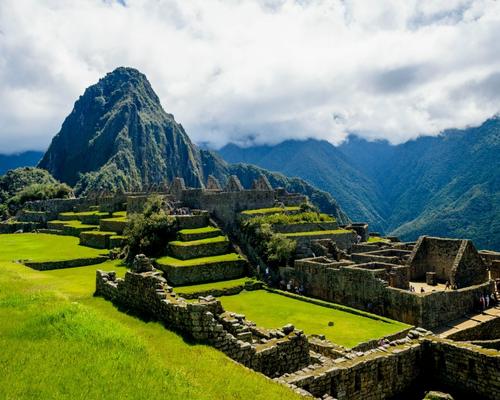 JANUARY
JANUARY
 FEBUARY
FEBUARY
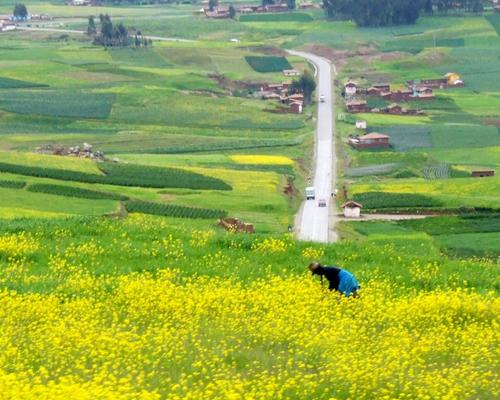 MARCH
MARCH
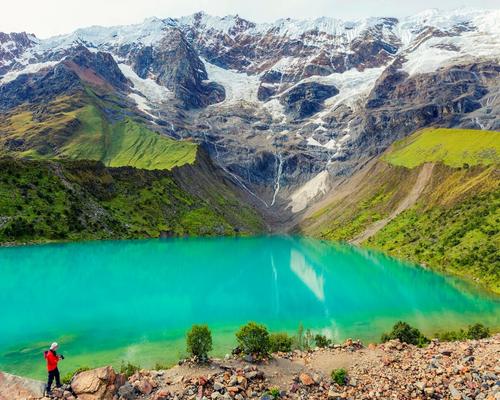 APRIL
APRIL
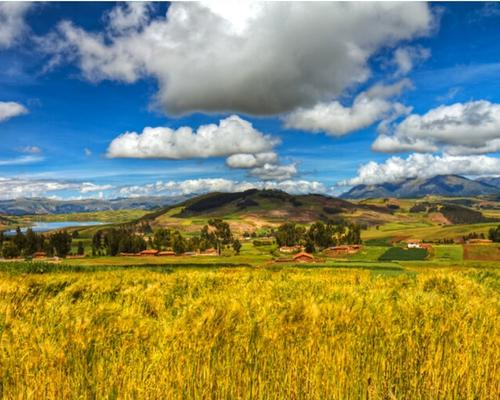 MAY
MAY
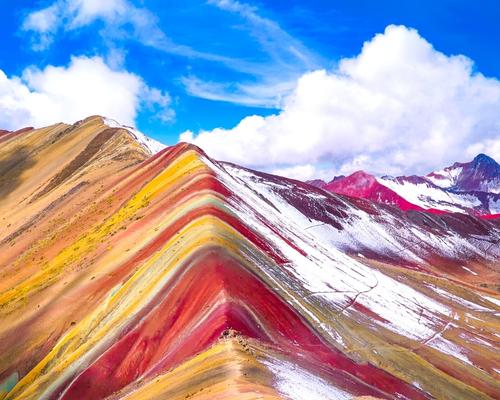 JUNE
JUNE
 JULY
JULY
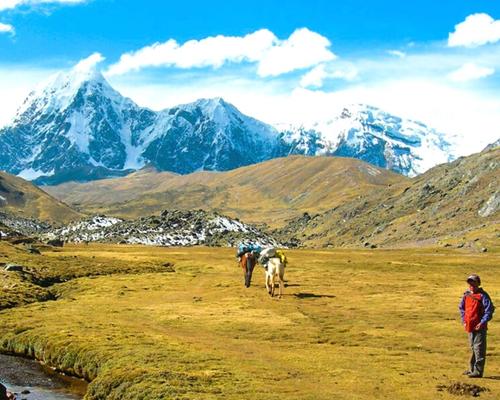 AUGUST
AUGUST
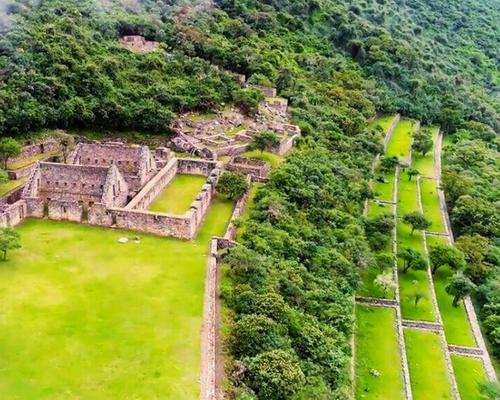 SEPTEMBER
SEPTEMBER
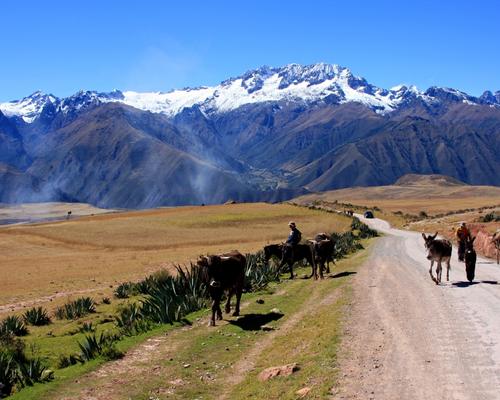 OCTOBER
OCTOBER
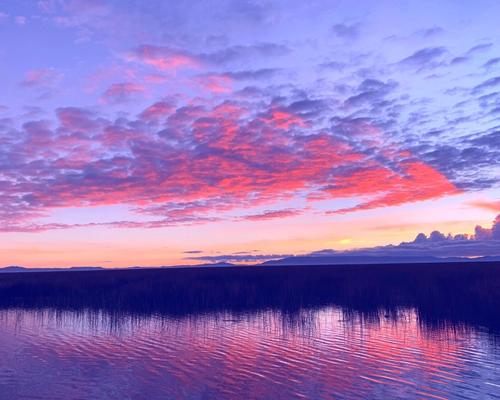 NOVEMBER
NOVEMBER
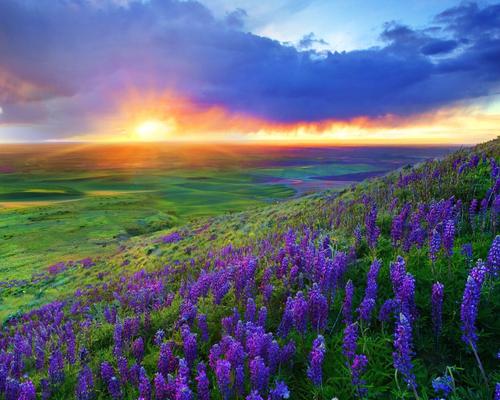 DECEMBER
DECEMBER
To book this tour, a minimum of $ 200 USD per person is required, the remaining balance will be paid upon arrival in Peru, at the Cusco office.
Any other additional information, please coordinate with your travel agent.
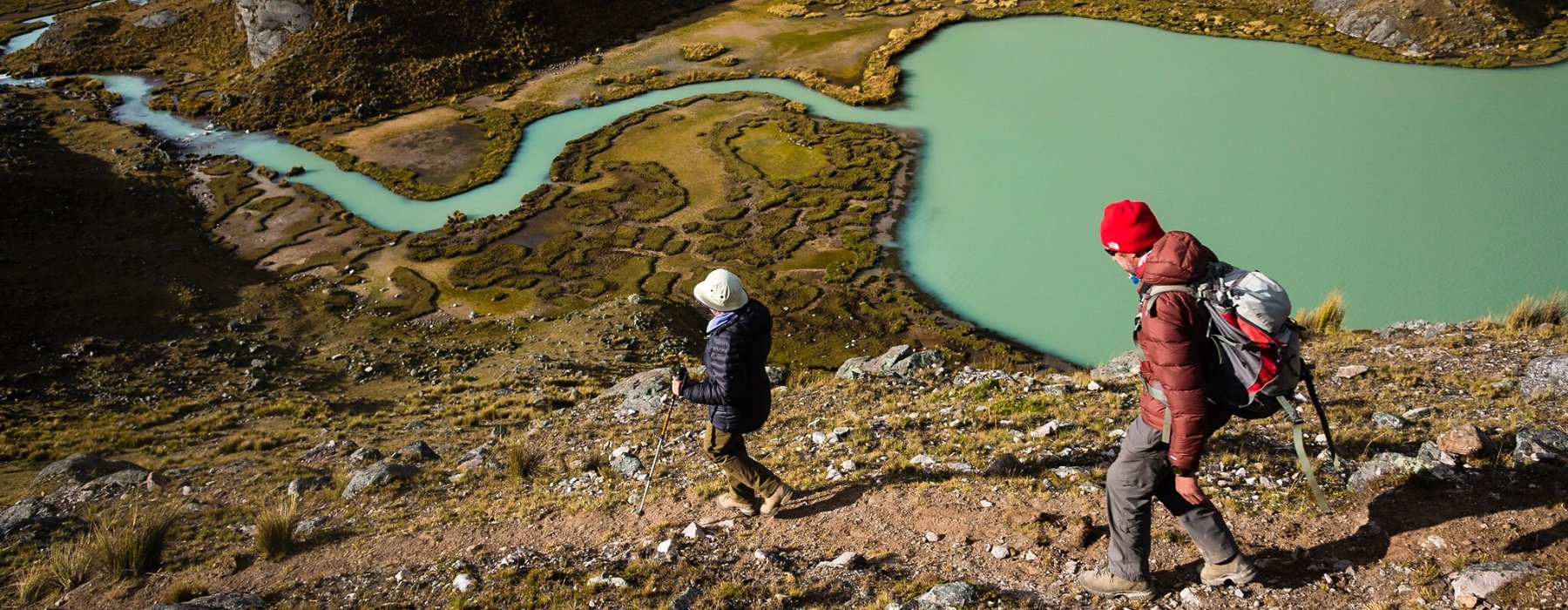
Nothing gets you closer to a country than walking through it, and we’ve got trips to suit walkers of all levels and interests.

All our Walking trips are graded from ‘Easy’ through to ‘Challenging to Tough’. On our online trip itineraries you’ll find a chart showing the daily walk distances, timings and information on the route including the terrain, altitude. Generally, no specific training is needed but you might feel more comfortable if you’ve got out walking a few times in the lead-up to your trip.
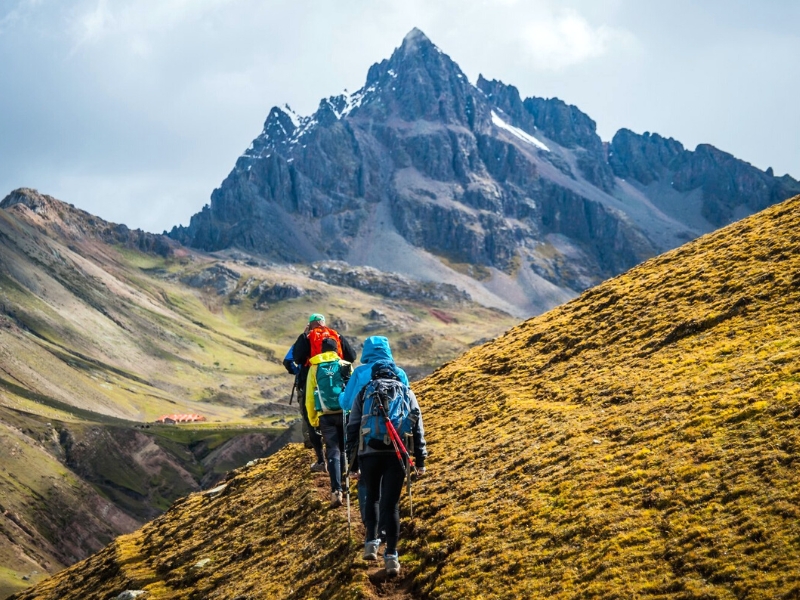
As with all our trips, every group is different but the ‘average’ group consists of roughly half couples and half solo travellers – all sharing a passion for exploring the world on foot. You’ll always have someone to keep you company along the route, but you don’t always have to walk together. Wherever possible your Andean Great Treks leader will allow everyone to walk at their own pace, regrouping regularly along the route.

Mostly of our hikes in the mountains in Peru and Cusco like the classic Inca Trail to Machu Picchu, Ausangate Trek, Lares Trek, Ancascocha Trek, Salkantay Trek , involves an average of walking hours of 7-8 hours per day, this timing includes stops for taking photos, lunch, breaks for recovery the energy, and the most important we adapt to your walking pace. This relaxed style of trip involves to know all the attractions in greater depth.
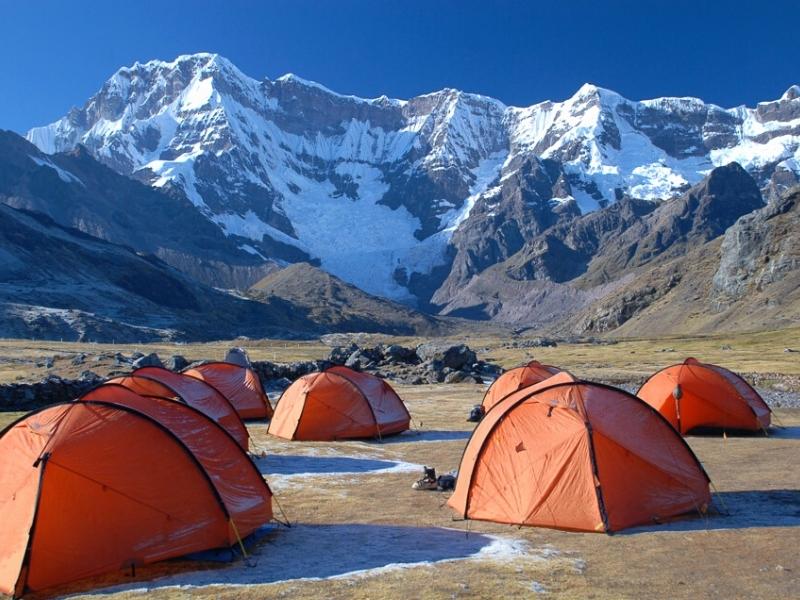
On nearly all our Walking trips, porters or mules will carry all the camping equimpent, so your main luggage will be transported for you. We recommend walk with a light rucksack, you will carry water, snacks, a camera, a small first aid kit and any extra clothing or sun protection. On more remote or challenging treks, additional guides are there to assist the leader tour guide and provide support to the group.
The acclimatization period is very important for our travelers to enjoy the experience. We suggest a minimum of 3 or 4 days of the previous stay in Cusco city, the Sacred Valley of the Incas or Machu Picchu. We recommend you check the acclimation programs we have prepared for you on our website.
The average height of our camps in the trekking circuits is 3,500 masl. In fact, one of the circuits where you sleep at the highest altitude is the Ausangate Trek, where you will have days to set up the tents at a height of 4,300 meters. Remember that Peru has snowy peaks that reach up to 6,700 masl.
From 3,000 meters above sea level, the symptoms of “altitude sickness” vary according to each person, and may even not occur. However, among the most common are a headache, dizziness, nausea, loss of appetite and insomnia. Therefore, upon arriving in the city of Cusco, located at 3,400 meters above sea level, we recommend our travelers to take a good rest, drink plenty of water, eat light meals and take slower walking. Also, it is necessary to avoid alcoholic beverages and cigarettes. The symptoms can be alleviated with high mountain medicines such as DIAMOX or similar products, but we suggest you consult with your doctor before the trip.
While on the trail, hikers will need to carry a daypack (camera equipment, water bottle, extra layers, rain gear, and other accessories you might need on the trail.) Horses and llamas will carry your duffle bag to the next camping site.
The company makes the greatest efforts to provide a safe and unforgettable experience, for this reason, the trekking guides are constantly communicated with the central office through satellite phones, ensuring the welfare of each passenger. Our guides are trained in rescue techniques and first aid in emergency outdoor, these courses are developed annually and have the standards of the wilderness first respond. At all times we have oxygen and first aid equipment. In case of any eventuality a medical director will answer our questions 24 hours a day. In addition to the animals who carry the luggage we have horses to help walkers tired or eager to ride. We recommend getting a travel insurance.

Every Andean Great Treks holiday has been thoughtfully planned and crafted by our specialists. They draw on their own extensive travel experience and the guidance and expertise of our local partners to create superb holidays. Our specialists are committed to making every aspect smooth and enjoyable; they genuinely want to ensure that the holidays they create leave you with wonderful lasting memories.
Every Andean Great Treks traveller is accompanied by an experienced tour guide, you will be immersed in Historic cities, ancient ruins and unfamiliar landscapes are all brought to life by our carefully selected local guides. They want to share their expertise and help you make your own discoveries too; their sole mission is to ensure you enjoy every moment.
Giving you the freedom to make your holiday even more memorable. We know how much our customers look forward to their holiday and we pride ourselves on the choice and flexibility that we offer to enhance every aspect of your experience. Whether it’s getting to the airport, upgrading your room or booking an additional excursion, we can help.

Our guides are the stars of the show; it is their unrivalled knowledge, passion and expertise that will transform your tour experience from good to truly extraordinary!
Because the have grown up in the area and know it like the back of their hand, so they can help you experience whichever aspects most interest you. They’re passionate about sharing their corner of the world with you, and as you explore together, they’ll open your eyes to the intricate details, provide background to enhance your understanding of what you’re seeing, and share stories that will bring everything to life.
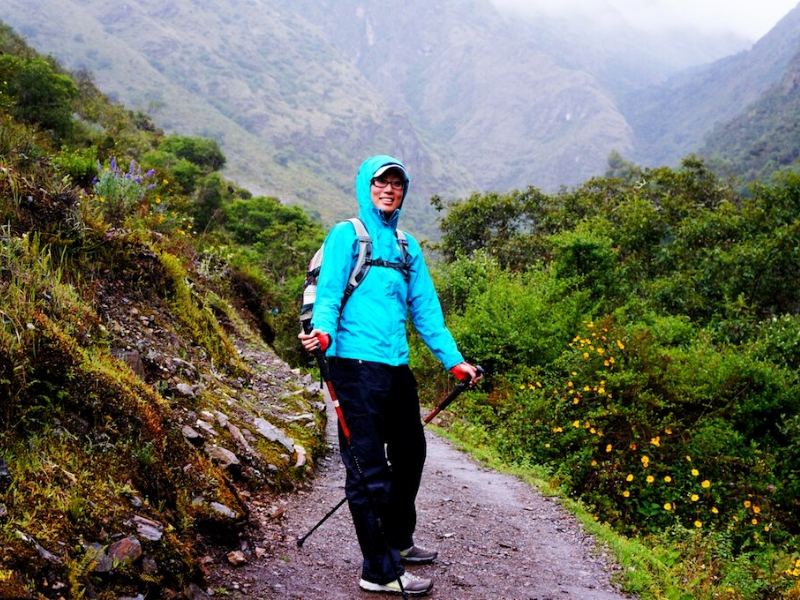
“Your inspiration for a trip can be a single word or a highly evolved outline, but it’s the conversations we have that help us understand the experience you’re looking for. Meanwhile, I’m looking back on the time I spent at the destination.
‘The great thing about working with a specialist at Andean Great Treks is how they take your complete jumble of ideas and turn them into something absolutely spectacular.’
As you begin to share your ideas with your specialist, it will connect them immediately back to a time in their own travels. Conjuring a picture of the rest time they made that same discovery, reminding them how it felt.
Your specialist understands that, when the journey is right, it has the power to excite your emotions in the most profound ways after all, that was the effect on them.
They carry a treasure box of moments, captured over many journeys, into every suggestion they’ll share with you, as they ask you how you want to feel on your trip.
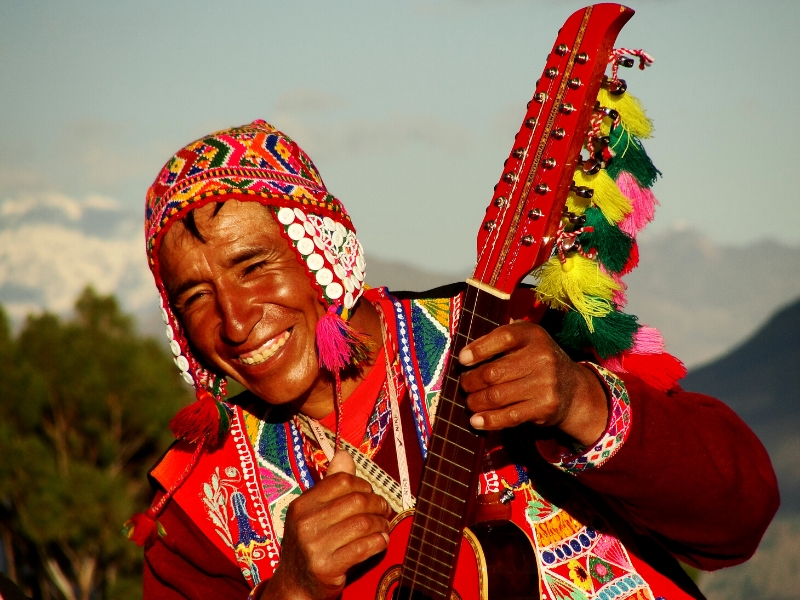
EXPERIENCES THAT CALL TO YOU
It’s what you do in a destination that helps bring it to life. It’s why we strive to choose experiences that help you connect to a place, absorbing a little of its complex character. Wherever your passions lie, we’ll recommend experiences that speak to you, and we’ll recommend the guide or local expert who’s most qualified to help you explore. Packing your holiday full of special experiences means some early starts and long days, but you can be sure that you’ll return home with many incredible memories! Read our Tours and check the Physical Ratings to see if the pace and activity levels are right for you.

STAYS WITH DIFFERENCE
We know that where you stay is a cherished part of your travels. So, we go to great lengths to find places to stay that exceed expectations, or go above and beyond the ordinary, whether in their character, hospitality, or location. Over the years, we’ve discovered the very best properties, trying and testing them, so we can choose the right one for you. We’ve nourished long-standing relationships with these establishments and the people who founded them, and we’ve stayed there many times often, we’ll even know which rooms have the best views (and reserve them for you).
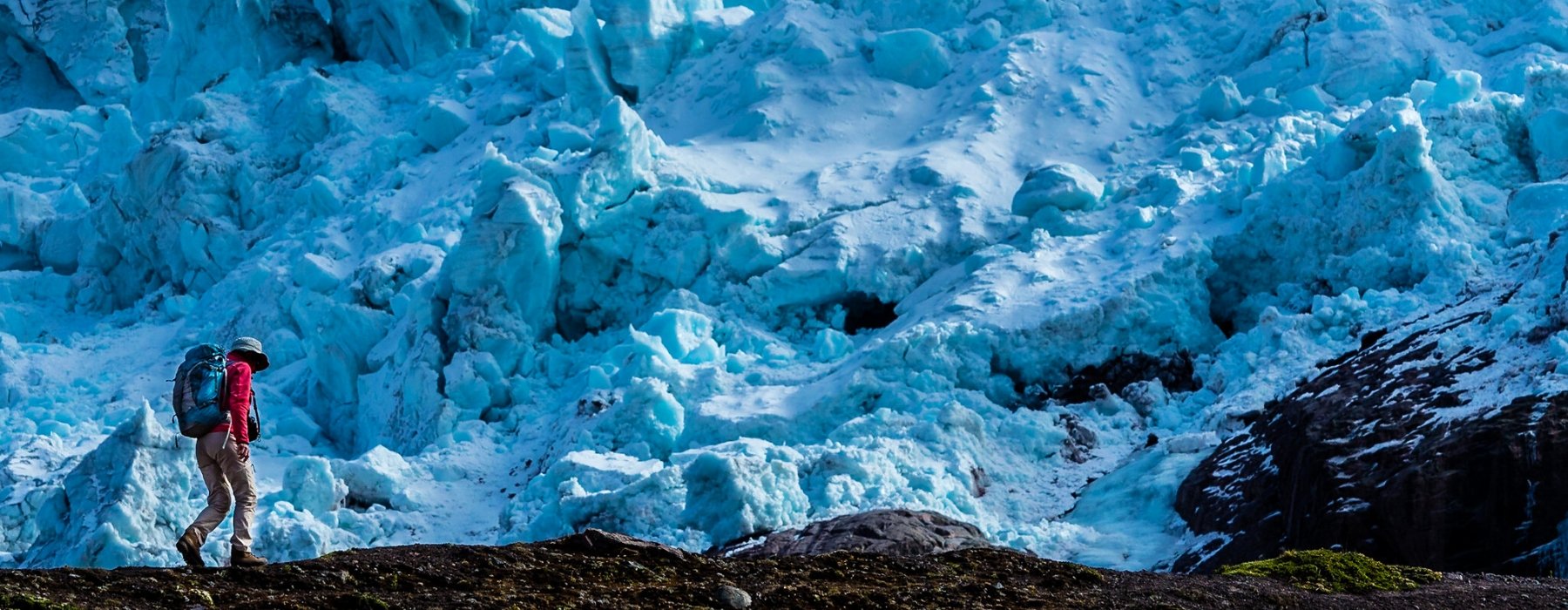
Our style of travel — authentic, thoughtful, and focused on building meaningful connections to the people and places you visit — is inherently respectful and considerate of the destinations we love. We design each aspect of your trip exactly as you want it, which includes its sustainability. That might mean choosing a train journey instead of a flight, staying at eco-friendly wildlife lodges, or opting for experiences that give back to the communities you’re visiting. The choice is yours.
Responsible travel has always been at the heart of what we do. First and foremost, because it gives you the best experience, but, also because it helps to preserve the communities and landscapes you visit. This isn’t new for us we collaborated with local communities and outside experts so we can grow to be better ambassadors.
The most authentic and interesting experiences often directly benefit the local people. We prefer to buy local products that are produced in the organic farms of the Sacred Valley, we also have alliances with local artisan organizations who provide us with souvenir items for our clients, your money directly benefits the local economy.
Our style of travel — authentic, thoughtful, and focused on building meaningful connections to the people and places you visit — is inherently respectful and considerate of the destinations we love. We design each aspect of your trip exactly as you want it, which includes its sustainability. That might mean choosing a train journey instead of a flight, staying at eco-friendly wildlife lodges, or opting for experiences that give back to the communities you’re visiting. The choice is yours.
Responsible travel has always been at the heart of what we do. First and foremost, because it gives you the best experience, but, also because it helps to preserve the communities and landscapes you visit. This isn’t new for us we collaborated with local communities and outside experts so we can grow to be better ambassadors.
The most authentic and interesting experiences often directly benefit the local people. We prefer to buy local products that are produced in the organic farms of the Sacred Valley, we also have alliances with local artisan organizations who provide us with souvenir items for our clients, your money directly benefits the local economy.
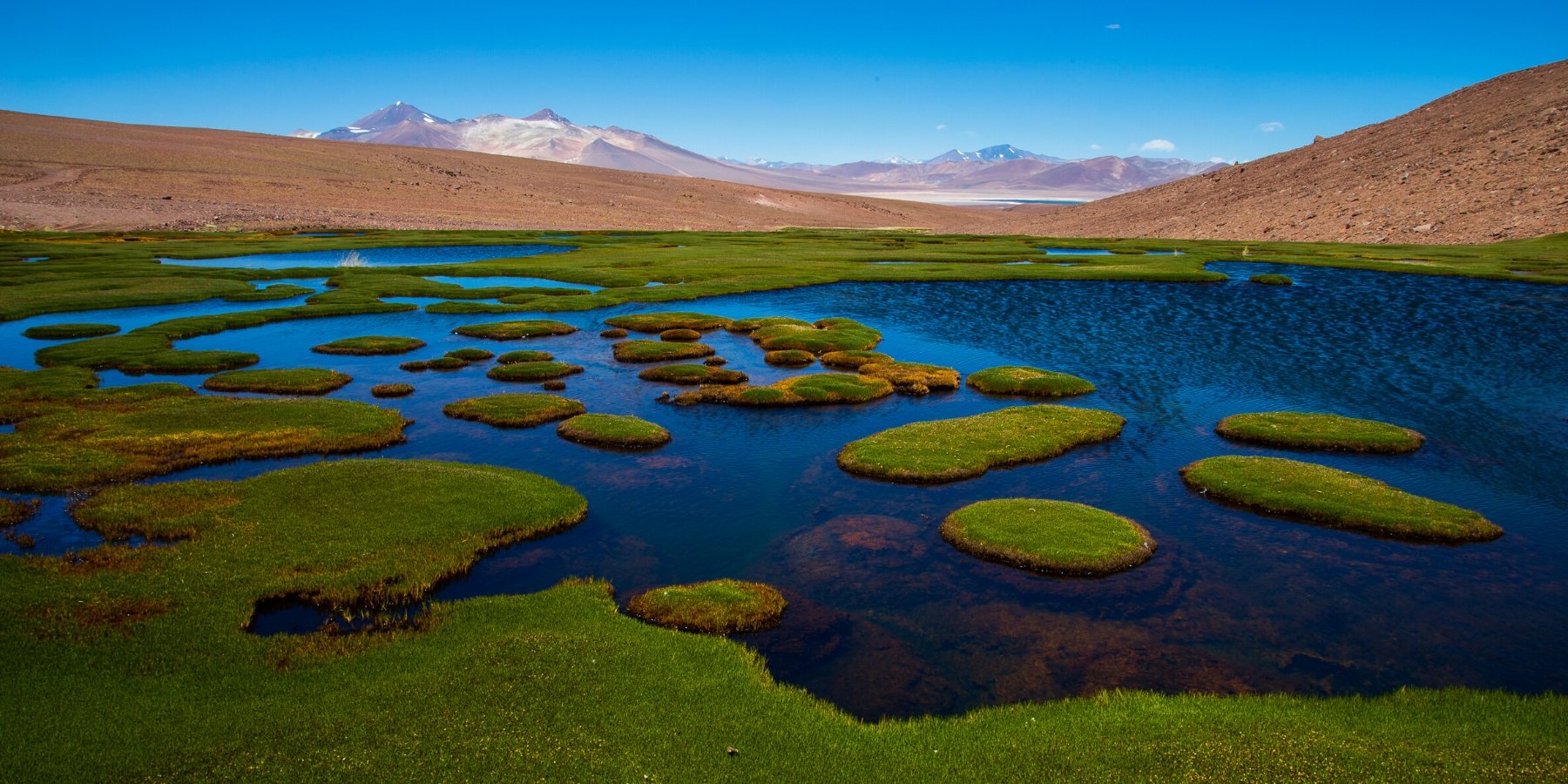
‘There’s a saying: we don’t inherit the Earth from our ancestors, we borrow it from our children. When we show you our country, this philosophy guides everything we do. It’s our responsibility to preserve the environment and wildlife, and support communities. That means using slower modes of transport, like cycling, employing local people, and working with communities who’ll benefit directly from your visit. This also gives you the best, most authentic impression of the places we want to share with you.
We prefer to buy local products in ecological bags, to avoid the use of plastic bags, likewise we teach the use of soaps and ecological products in each tour that we organize. We also work on reforestation projects with local communities who take care of landscape resources such as communal reserves, national parks.
‘There’s a saying: we don’t inherit the Earth from our ancestors, we borrow it from our children. When we show you our country, this philosophy guides everything we do. It’s our responsibility to preserve the environment and wildlife, and support communities. That means using slower modes of transport, like cycling, employing local people, and working with communities who’ll benefit directly from your visit. This also gives you the best, most authentic impression of the places we want to share with you.
We prefer to buy local products in ecological bags, to avoid the use of plastic bags, likewise we teach the use of soaps and ecological products in each tour that we organize. We also work on reforestation projects with local communities who take care of landscape resources such as communal reserves, national parks.
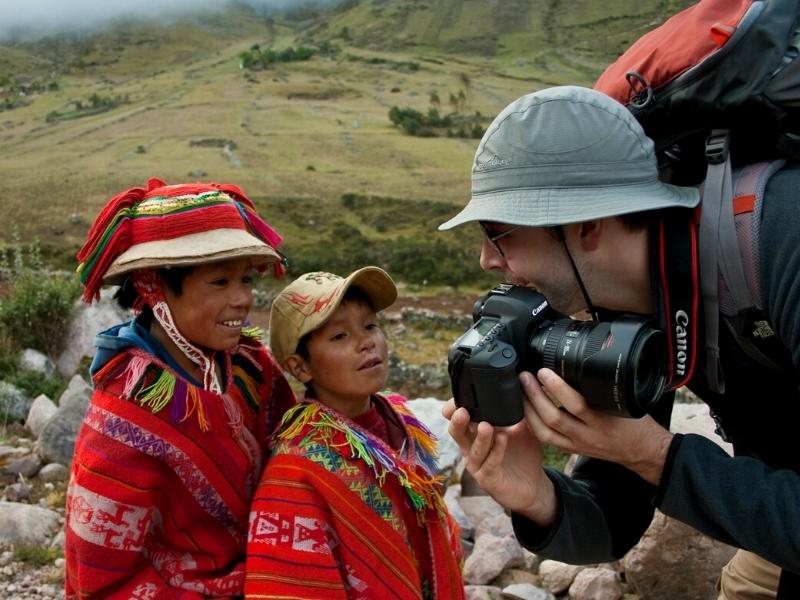
The Lares Trek combines high Andean trekking with a chance for genuine interaction with the most isolated indigenous communities which keep the inca culture alive. Majestic glaciers, amazing glacial lakes, waterfalls, llamas, and alpacas.
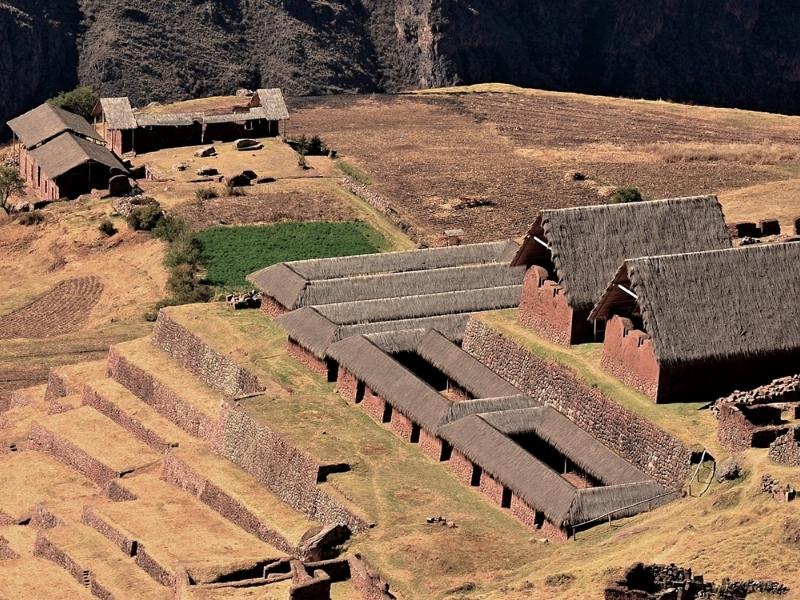
The walk from Huchuy Qosqo to Machu Picchu, is one of the shortest in Cusco, but full of unique landscapes, and towns with ancient traditions. This circuit is recommended for tourists who want to know little-visited places, with a camp from where you can see a unique sunrise of the Sacred Valley of the Incas.

Explore the Lares Trek to Machu Picchu, this trip takes you to the heart of the Andes where few tourist have ventured, you will enjoy the Andean traditions and original indigenous villages, who are still keeping the incas traditions, imposing glaciers, green lakes, waterfalls, llamas and alpacas.